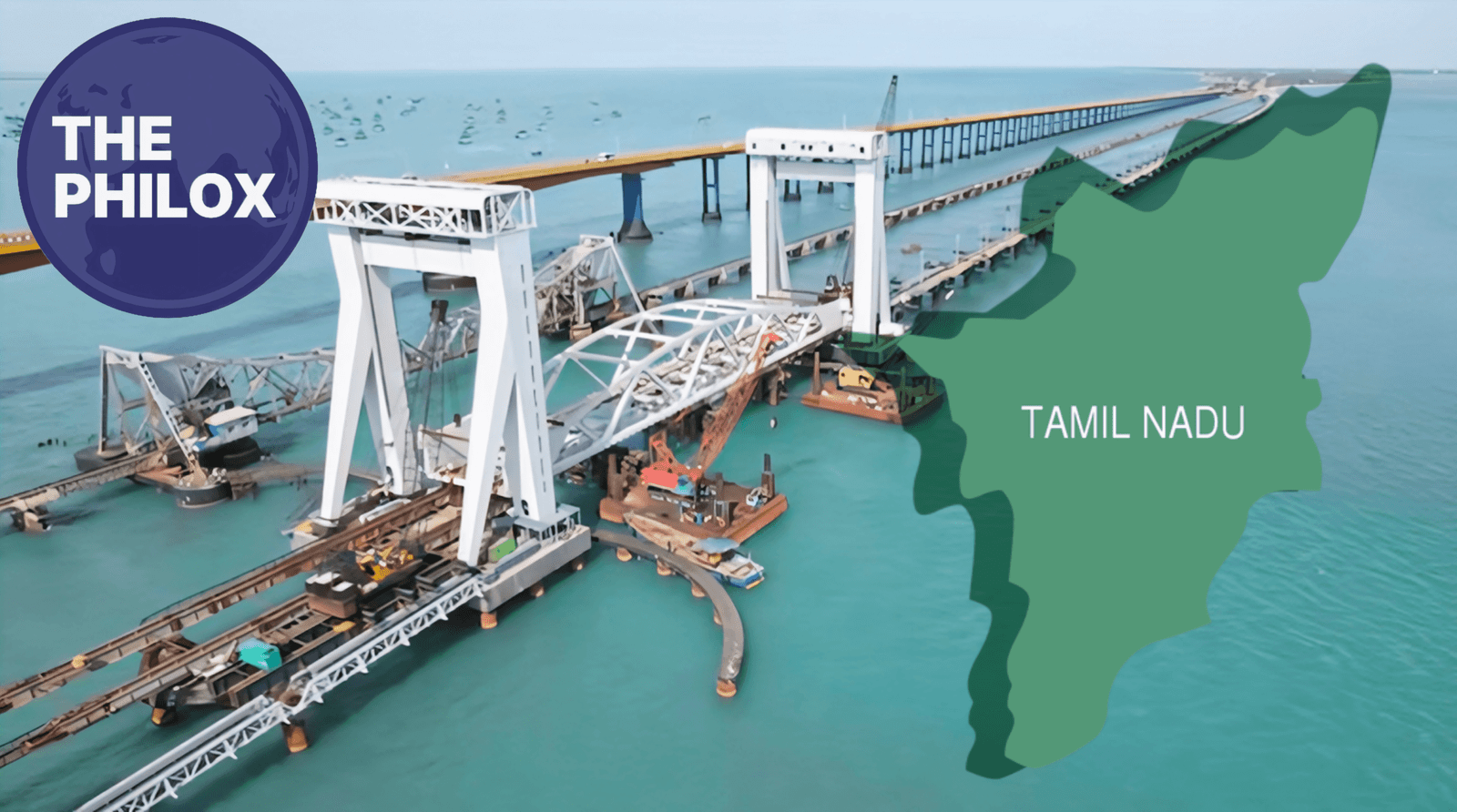Among the most recognisable railway bridges in India is the Pamban Bridge Nestled in Tamil Nadu, it links Rameswaram on Pamban Island to the Indian mainland.
This bridge has tremendous historical, architectural, and cultural value in addition to being a means of mobility.
The bridge made news once more in 2024 when Prime Minister Narendra Modi opened the new Pamban railway sea bridge. Let us know what distinguishes this bridge.
A Travel Through Time
Opening in 1914, the first Pamban Bridge For decades it was the only link between the mainland and Rameswaram Island and India’s first sea bridge.
Serving millions of people over more than a century, this bridge carried commodities as well as passengers.
An engineering wonder of its day, the bridge stayed operational over many natural obstacles including severe sea winds and storms.
Built during British control, it took almost fourteen years to finish. Building a bridge across the water was a huge chore at that period.
Comprising 143 piers, the initial construction was 2.3 kilometers long. The double-leaf bascule section of the bridge—also known as a Scherzer rolling lift span—was among its most amazing elements. One might lift this part to let boats and ships pass by.
Why Was That So Crucially Important?
For many years, the Pamban Bridge was Rameswaram’s sole rail connection. Rameswaram is not only any other Tamil Nadu town.
One of the four Char Dham pilgrimage locations for Hindus, this is a really mystical location.
Traveling to Rameswaram to see the renowned Ramanathaswamy Temple, pilgrims from all throughout the nation come. For religious tourism, this made the bridge rather crucial.
Apart from religious considerations, trade and transportation depended critically on the bridge.
Fishermen and merchants moved their goods across the bridge. It improved the connectedness of island residents and aided in the local economic growth.
Difficulties the Old Bridge Faces
The old bridge had several difficulties over years. It was always in rough weather and salted air as it was over the sea.
The bridge suffered several times, particularly during storms. 1964 was one of the most terrible disasters when the Dhanushkodi cyclone struck the area.
Many people died and a train vanished. The bridge needed regular maintenance even if it survived.
The bridge aged with time. It would not be able to support faster modern trains. Furthermore slow and challenging to run was the old lifting system, which let ships pass. Safety issues and mounting transportation needs drove the government to decide to construct a new bridge.
The New Pamban Bridge: Modern wonder
Prime Minister Narendra Modi opened the modern Pamban railway sea bridge in March 2024.
For Tamil Nadu’s growth as well as the history of Indian railways, this occasion marks a turning point. Built parallel to the previous bridge, the new one is made with modern materials and technologies.
First vertical-lift railway sea bridge built in India This means that the new bridge features a part that raises straight up, allowing ships and boats to pass beneath it rather than the traditional bascule type.
Faster, safer, more dependable this lifting mechanism is. About seventy-two meters long, the vertical lift span can be raised by almost eighteen meters.
Higher train speeds and greater loads are expected of it in handling. Higher above sea level, the bridge is also constructed to stop flooding during storms and strong tides.
It makes use of cutting-edge materials more resistant to salt water corrosion. This will enable the bridge to last longer requiring less maintenance.
Symbol of connectivity and development
Prime Minister Modi’s opening of the new Pamban Bridge is a significant first toward bettering southern Indian infrastructure.
Modi said during the opening about how the bridge would increase tourism, enhance connection, and help the nearby business. He also underlined how India’s engineering and modern construction had advanced with the new bridge.
The bridge fits within the bigger picture of linking outlying areas of India with improved ports, railroads, and roadways.
Particularly for tourists visiting Rameswaram, Dhanushkodi, and adjacent coastal regions, it is intended to promote the spiritual tourism circuit. Furthermore facilitating speedier and more effective transportation of goods will be the upgraded railway connection.
What distinguishes this bridge?
The new Pamban Bridge represents India’s capacity to combine modernism with legacy, not only a construction project.
It links the historically and very religious town of Rameswaram to the rest of the nation using the most recent technologies. It presents improved safety, speed, and strength while honoring the tradition of the existing bridge.
The new bridge’s engineering design distinguishes it from others in India. This is a spectacular project with the vertical lift system, sea-level height, corrosion-resistant materials, and environmentally friendly building techniques.
It demonstrates India’s concentration on smart and environmentally friendly infrastructure.
The Emotional and Cultural Tie
Many people in Tamil Nadu and around India find great emotional resonance in the Pamban Bridge. It goes beyond a bridge.
It ties to faith, legacy, and memory. Many people recall seeing the unending blue sea while passing the old bridge in trains. The bridge has always piqued curiosity among photographers, tourists, and history buffs.
Now a fresh chapter opens with the new bridge. It will keep providing comfort and safety while nonetheless serving people with the same spirit.
While the new bridge marks the road forward, the old one will remain a part of history.
Final Thought
Old and modern, the Pamban Bridge is evidence of human will, faith, and development. From the days of British engineering to the age of smart, contemporary infrastructure, this bridge’s path mirrors India’s own.
Rameswaram is poised to greet more pilgrims, visitors, and traders than ever before with the new bridge open and running. This bridge links people to culture, history to present, dreams to reality, not only land to land.




